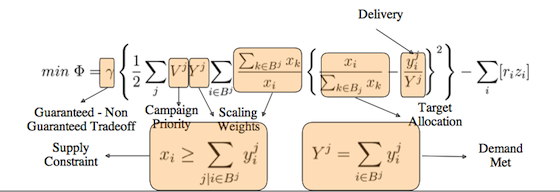In 1999, online marketers promised consumers they would protect their privacy. Leading interactive ad companies created the Network Advertising Initiative (NAI) as a scheme to head-off proposals by the FTC that would help regulate online profiling. Now it turns out, says the online ad industry, the NAI really couldn’t work. So they have developed yet another self-regulatory effort. Here’s what online marketers told Ad Week today: “The move marks the most significant regulation the industry has imposed on companies and goes significantly farther than the Network Advertising Initiative, which held third-party advertisers needed to allow consumers to opt out. Doing so, however, was a cumbersome process.“  So the industry didn’t tell the FTC or consumers that the NAI wasn’t consumer friendly and “cumbersome.” Yet they have used the NAI as a political bulwark to head-off consumer protection rules. Shame on them. Meanwhile, in the same story, it’s revealed that only now–as pressure mounts to protect online consumers—does the industry recognize protecting privacy is important: “The guys that drive the industry have figured out this privacy stuff does matter,” said Scott Meyer, CEO of Better Advertising Project, which will help companies comply with the requirements.
The new “aboutads.info” website established by the industry fails to provide consumers serious information about cookies and behavioral targeting and profiling. It reveals how little the industry is committed to protecting privacy and informing U.S. consumers about the process. To see how this new plan is really designed to protect the data collection business, examine the rules for sensitive information. Beyond the children’s privacy law (COPPA) we got enacted in 1998, this scheme permits full-scale collection and use of financial and health information.  Under the “new” self-reg policies, the narrowest of definitions for respecting your financial and health information has been created: “Entities should not collect and use financial account numbers, Social Security numbers, pharmaceutical prescriptions or medical records about a specific individual for OBA without Consent.”
Shame on them. Online marketers spent some $3 billion last year on online financial marketing and will spend $1 billion for pharma and health related targeting in 2010. Consumer data collected by online financial and health marketers, much of which is sensitive and personal, is ok under the industry’s “new” plan.
PS: The folks at Better Advertising need to take a course in online marketing–and change its new website so it really informs consumers about the process. What it has now would get a C-minus in any class on online marketing. They can start with 360 degree targeting, online and offline profiling, rich media, a serious description of online auctions, the tracking process, work on “engagement” and neuromarketing,” social media marketing, etc. Consumers deserve better.
 That’s the formula Yahoo is using to please its largest advertisers, explains an article in
That’s the formula Yahoo is using to please its largest advertisers, explains an article in